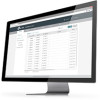TP-Link Pharos Control PharosControl User Guide - Page 26
modes: Client, Repeater, Bridge and AP Client Router., Bridge
 |
View all TP-Link Pharos Control manuals
Add to My Manuals
Save this manual to your list of manuals |
Page 26 highlights
Status Displays the status of the device. Unmanaged: The device cannot be managed by Pharos Control. It is the initial status of the device. Also, when the managed device is down or disconnected to Pharos Control, the status will change from Managed to Unmanaged. Managed: The device is being managed by Pharos Control. Connecting: Pharos Control is trying to connect and manage the device. Upgrading: The device is being upgraded. Rebooting: The device is being rebooted. Connection Failed: Pharos Control is failed to connect the device when trying to manage the device. Invalid Credentials: Pharos Control is failed to manage the device because of incorrect username, password or port number. MAC Address Displays the MAC address of the device. IP Address Displays the IP address of the device. Product Displays the model and hardware version of the device. Version Displays the software version of the device. Mode Displays the working mode of the device, including Access Point, Client, Repeater, Bridge, AP Router and AP Client Router. SSID Displays the SSID of the device. Root AP SSID Displays the SSID of the device's root AP when it is in either of the following modes: Client, Repeater, Bridge and AP Client Router. Client Number Displays the number of the wireless clients connected to the device. Transmit CCQ Displays the transmission quality of the clients connected to the device. Here CCQ refers to Client Connection Quality. SNR Displays the Signal-Noise Ratio of the device. Tx Rate (kbps) Displays the rate of sending data of the device. Rx Rate (kbps) Displays the rate of receiving data of the device. Tx Total Displays the total data traffic sent by the device. Rx Total Displays the total data traffic received by the device. CPU Load (%) Displays the CPU usage of the device. CPU Frequency (MHz) Displays the CPU frequency of the device. Memory Usage (%) Displays the memory usage of the device. Memory Size (MB) Displays the memory size of the device. 23















